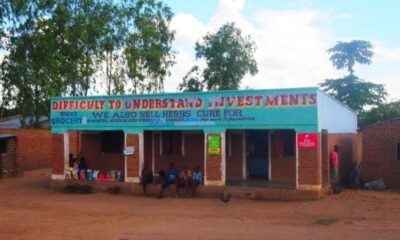

Economy
The Funds Behind A Peaceful Environmental Movement
Starting an environmental movement might not be easy, but it’s possible. In fact, with the right funding, your movement could really grow some roots. Unfortunately, cash is a necessary evil in order to, really get the word out, structure a plan, create a website, purchase materials, and even support other worthy causes to web those meaningful common interests.
Though it might seem like every movement in the world runs solely on donations- most of them begin with loans or a sacrificial investment on behalf of the founder. During its 21-year existence, the Environment Support Center (ESC) gave out over $822,000 in loans and $2.5 million in grants to small environmental organizations.
Here is an overview on what to do with your passion and ideas.
Getting Started
It takes something to get a movement going. At first what you need are a few more people. Getting your first follower is critical- you’ll need someone that can advocate for your cause just as much as you can. Once your organization has grown to at least a handful, you’ll need a plan.
- Define what you want. Be specific. When people are going to donate, they like to know exactly where their money is going to go especially if your organization is new. A physical goal, like building a well or rescuing a sick animal, is better to start out with too. This first goal should be reachable within a few months if not weeks. A larger, inspirational goal can be there, too but starting with small wins will help get people on board. This is the start of your momentum.
If your goal is conservation based, you may want to start local, find a lot of support, and then branch out. Heartwood and Living Rivers are good examples of a regional approach to reaching a big goal.
- Set up a platform. You’ll need some way to get the word out and organize your followers. Social media is a great, free option. Your website, also, is even better. Depending on the size of your group and its goals this might be where you’ll want to start thinking about a base of operations, too.
- Think about the future. Now that you have some momentum but before you move ahead a bit. Do you want your group to be a nonprofit? Do you plan on producing a product or turning a profit? Not all movements and organizations are charities. The Great Seed Bomb in Texas isn’t but they still do a great job at supporting their cause.
- Funding. Depending on the structure you chose, your method of fundraising maybe a little different. However, you can and always will be able to ask for donations. For most environmental movements this is the core of their financial strategy–after it gets going. Meeting those initial goals may require a bit more.
- Goal Met? Repeat. Once your first goal is reached, it’s time to celebrate. Though soon after, charge straight into the next goal. Use your accomplishments to prove your credibility and show that yes, you can make a difference. The more you accomplish, the larger your movement will grow.
Non-profit v. For Profit
Choosing how to structure your organization is a big decision, but it all comes back to one issue: fundraising. While non-profit groups take donations and have no expectations to return the money, for profit groups are expected to give something back. It can be a product or a share, but it’s supposed to be something.
Non-profits are also tax exempt (in most ways). This comes with restrictions: their efforts cannot interfere with political campaigns and how they spend their money is monitored more closely than that of a for-profit organization.
It’s never a bad idea to consult with an experienced accountant or attorney regarding your goals and what the financial benefits of each strategy would be. This is especially true if you produce a product or plan to in the future.
Funding Options Beyond Donations
Accomplishing something, whether it’s for a good cause or not, takes money in nearly every case. The larger the movement, the more it takes. The #NoDAPL protesters needed funds for food, housing, warmth, sanitation, medical services, and more. If you’re trying to get one of your goals accomplished now but lack resources, you don’t just have to wait for donations. You have options like:
Installment Loans – The fastest way to get cash when you need it. Installment loans can fund your first big win and give you plenty of momentum. With predictable payments over time, you will have a longer window of opportunity to gather donations for immediate goals.
Grants – You can search for federal, state, and local grants or those provided by local businesses and organizations. Though the grant process can be lengthy, it can also provide a significant funding boost when (or before) you need it.
Corporate Funding and Sponsors – Any movement can be funded by a business. Even if they don’t offer, you can ask. It offers them a way to support the community or even a cause that aligns with their interests. As a registered nonprofit or charity you can also provide valuable tax deductions. Think about what businesses your movement or organization might benefit if it succeeds.
Partnerships – Partnering with another organization can give you a lot of exposure and a potential rush of donations. Finding a partner doesn’t mean you have to find another group with the same goal- similar goals can inspire the same groups of people.
Final Thought
If you have a good cause and your goal is to build on it, than don’t hold back. There’s only one way to resist unethical practices and that’s by standing up, making sure your voice is heard and making the difference in the community however small your movement is.
































